In Vietnam, life happens on the streets. Nothing interesting happens inside stores and people would always choose the sidewalks if the weather allows it. The sidewalks here are used for everything but walking. Here are some obstacles you might encounter as a pedestrian:
Parking
Many houses and stores in Vietnam were built without taking into account the parking space for customers. And since motorbikes don’t take that much space, almost every store would use the space in front of their porch as parking since it’s free.
Some other places, entire sidewalks have been turned into a parking lot for both cars and motorbikes. Sometimes, it is the parking lot for a restaurant or a store, other times, it is a common parking space regulated by city officials.
Of course, for a few of these places, it is against the City Commission’s regulations to park your vehicle but as long as you give the city officials a bit of pocket money, you can bypass those regulations until their visit the next month: petty corruption is a daily phenomenon.
People have started noticing that you can’t always rely on using the sidewalk space as parking for customers. Many recent houses are built with a parking space underground but even so, when given the opportunity, the sidewalk is the prime choice.
Display area
If you display your products inside your store, you will not get the attention of any customer. People are always in a rush, especially when life in big cities can’t be otherwise so people pass by on motorbikes very quickly. You need to get their attention and what better way to do so than using the sidewalk as the display shelf. This is definitely a lot more common in the Old Quarter of Hanoi, where many streets don’t allow cars or are reserved for pedestrians at night.

This practice often causes traffic problems. I remember one particular store selling Mid-Autumn mooncakes on my way home. The street is quite narrow, barely enough for 2 cars to avoid each other, and this store’s display case is on their front porch, almost on the sidewalk. As their customers would stop and park to quickly buy some mooncakes last minute on their way home from work, they would overtake half of the street, making that specific spot a traffic bottleneck.
I can’t think of how city officials can regulate this since the store didn’t overtake the street, they just set up their display in such ways that their customers are the ones overtaking the street. The only thing that could solve such issue is if the crowd of customers would be more observant and thoughtful. But like I’ve experienced it in so many cities like Metro Manila or Johannesburg, the overwhelming rush seems to make people less thoughtful of others and too worried about themselves, their own lives and objectives.
Grocery stalls, restaurants and shops
Big sidewalks in Vietnam are common places where you can find all types of goods: fruits, flowers and sometimes, even ceramic vases. This is because vendors in Vietnam are always mobile: they would move across the city with their products on their bicycles or baskets.
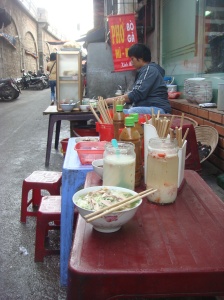
And for your convenience, you can also find a lady selling pho or noodle soups for breakfast and another selling doner kebab or just regular bánh mì. It is very common for people to start their own street food stall since food and health safety isn’t well enforced in Vietnam.
But that makes up for the amazing street food culture we have. If you look at Hanoi, you can probably count more street food stalls and casual restaurants than there are restaurants in New York City (and it would take you an entire year to have eaten at every restaurant in NYC). And this is probably one of the things that I love about Vietnam: all these people opening their own food place are entrepreneurs! Sure they don’t do it on a big scale but they technically are running their own business, they are their own boss and for some families, it is one of the main sources of income. I’ve never realized the strong entrepreneurial spirit displayed through our street food culture until recently.
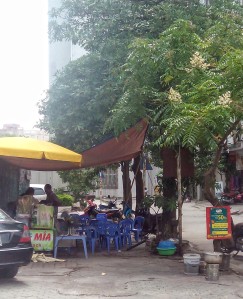
However, like the ever moving life in Vietnam, street food places open and close quickly. Only the best ones would last and if they do, they can last for decades. I’ll let you in on a secret: even though there are plenty of street food places, they aren’t all the same. A different ratio of fish sauce or vinegar in their dipping sauce can make a huge difference in the taste. I’ll share with you my map of street food places in another post!

If you can eat on the streets, then you can enjoy refreshments on the streets as well. There are a lot of street coffee places where you can get coffee, coffee mixed with yogurt, lime or orange juice, soda, tea or sugarcane juice. In Ho Chi Minh City, street coffee places are so common that people would even have a term for it, “cà phê bệt”, which I would translate as “sidewalk coffee”. People would sit on the ground, on a sheet of newspaper if they don’t want to dirty their clothes, or without it, if they don’t mind.
And finally, sidewalks aren’t just for products. You can also get services done and the most common one is the sidewalk barber shop for men.
Community life
The streets in Vietnam aren’t just lively during the day, it continues on until late at night. We call our “Happy Hour” “nhậu”, not because alcohol is cheaper during a certain period of time but because it’s time to wind down and chill with friends. Nhậu is a verb meaning to go grab some drinks and of course, you would be snacking as well. Typical snacks to go with the drinking would be grilled dry squid, deep-fried potato, corn or rolled snacks.

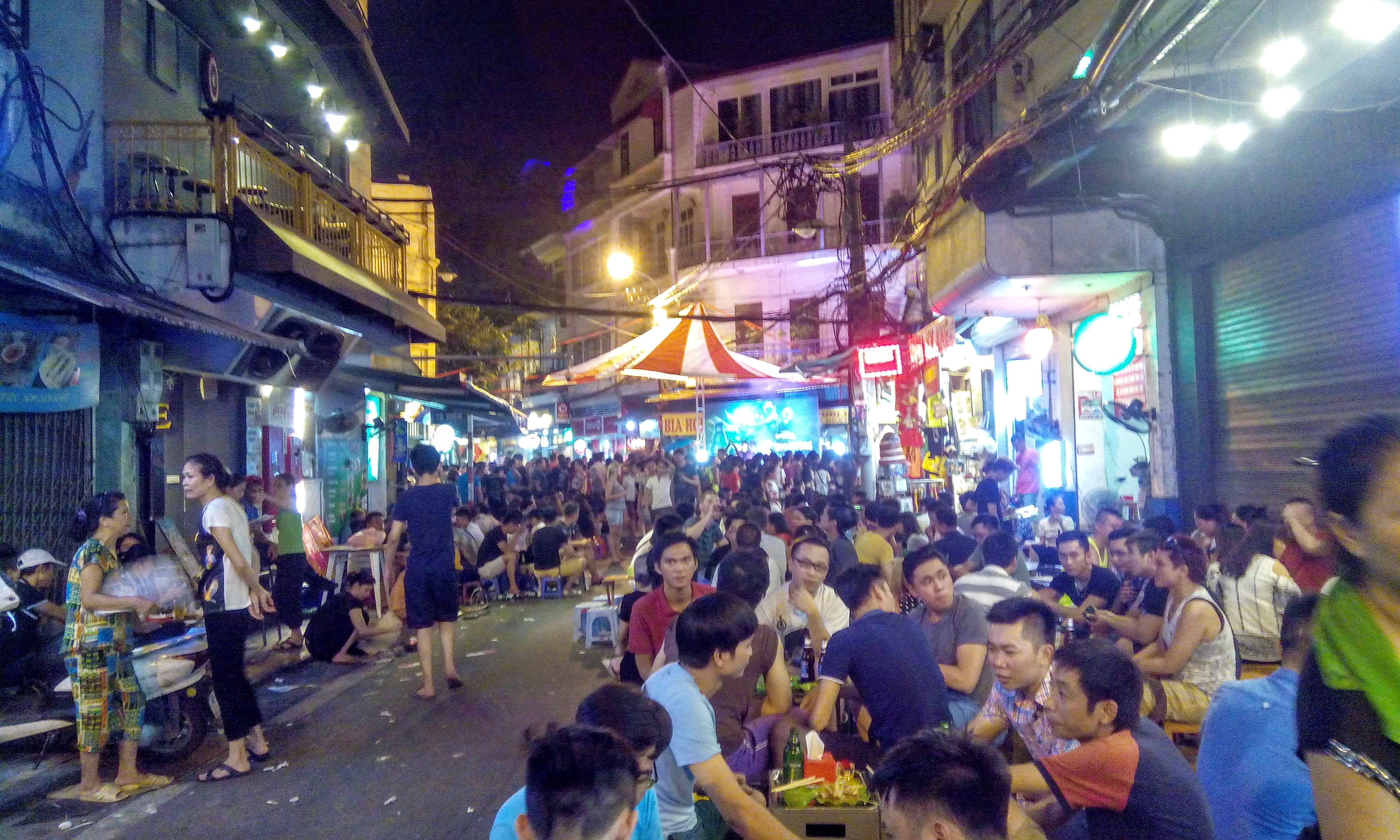
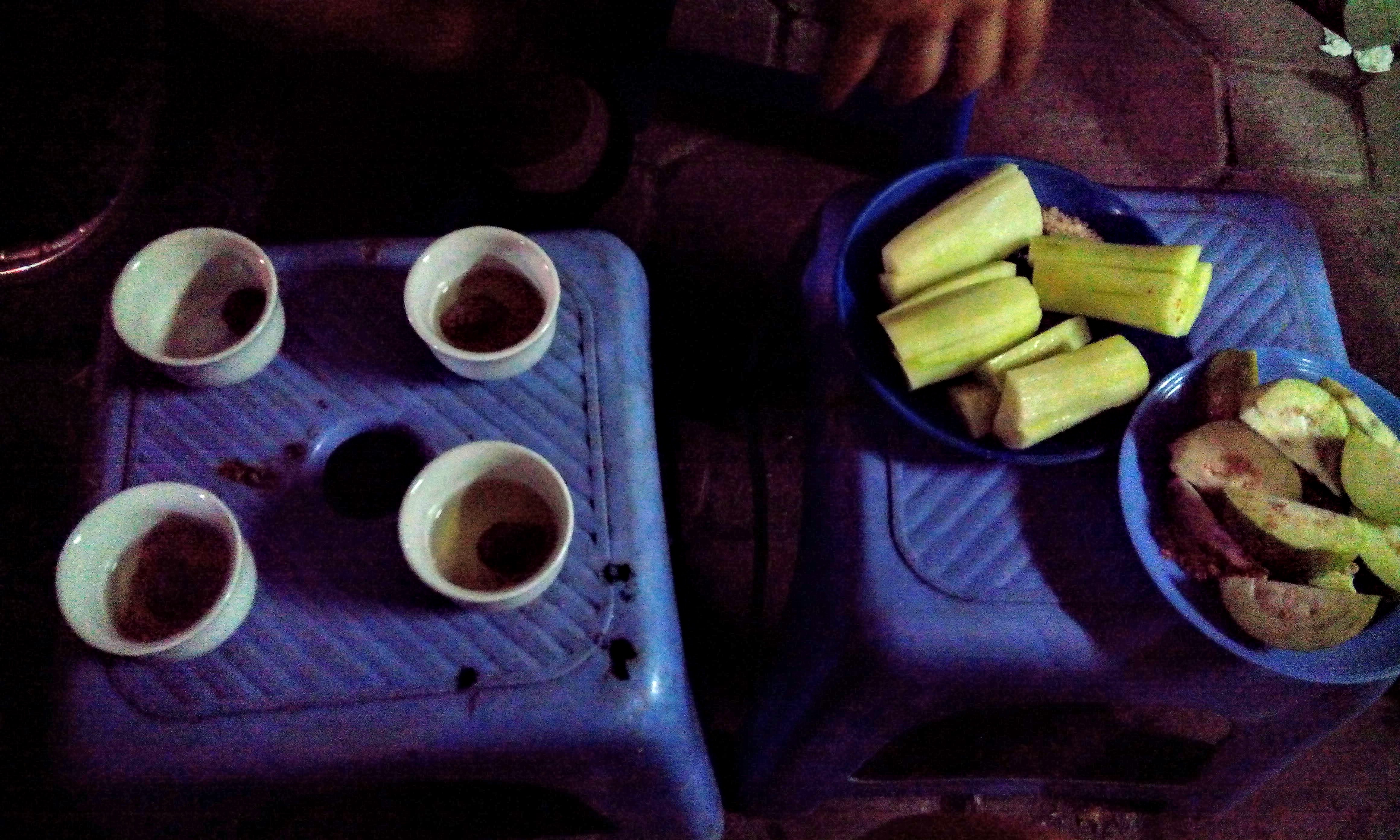
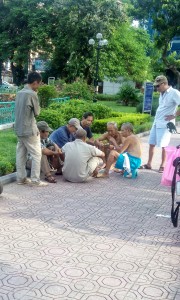
And finally, sidewalks in Vietnam aren’t just for commercial purposes. It’s also a place for the community to gather. In the late afternoons, if you wander to any street with large sidewalks, parks, big or small squares in front of statues or lakeside pathways, you can see people playing badminton, people kicking shuttlecock with friends, kids running or rollerskating, people doing tai chi, women dancing aerobics or old men gathering together to play chess.
Sure, people overtake the streets and sidewalks and yes, it is dangerous and annoying as a pedestrian to have to face so many obstacles. But in Vietnam, you need to learn that once you’re out the door of your home sweet home, you’re there to join others in the fast flow of daily life which never stops to wait for anyone. The street is where our lives happen so pay attention and keep up the pace!




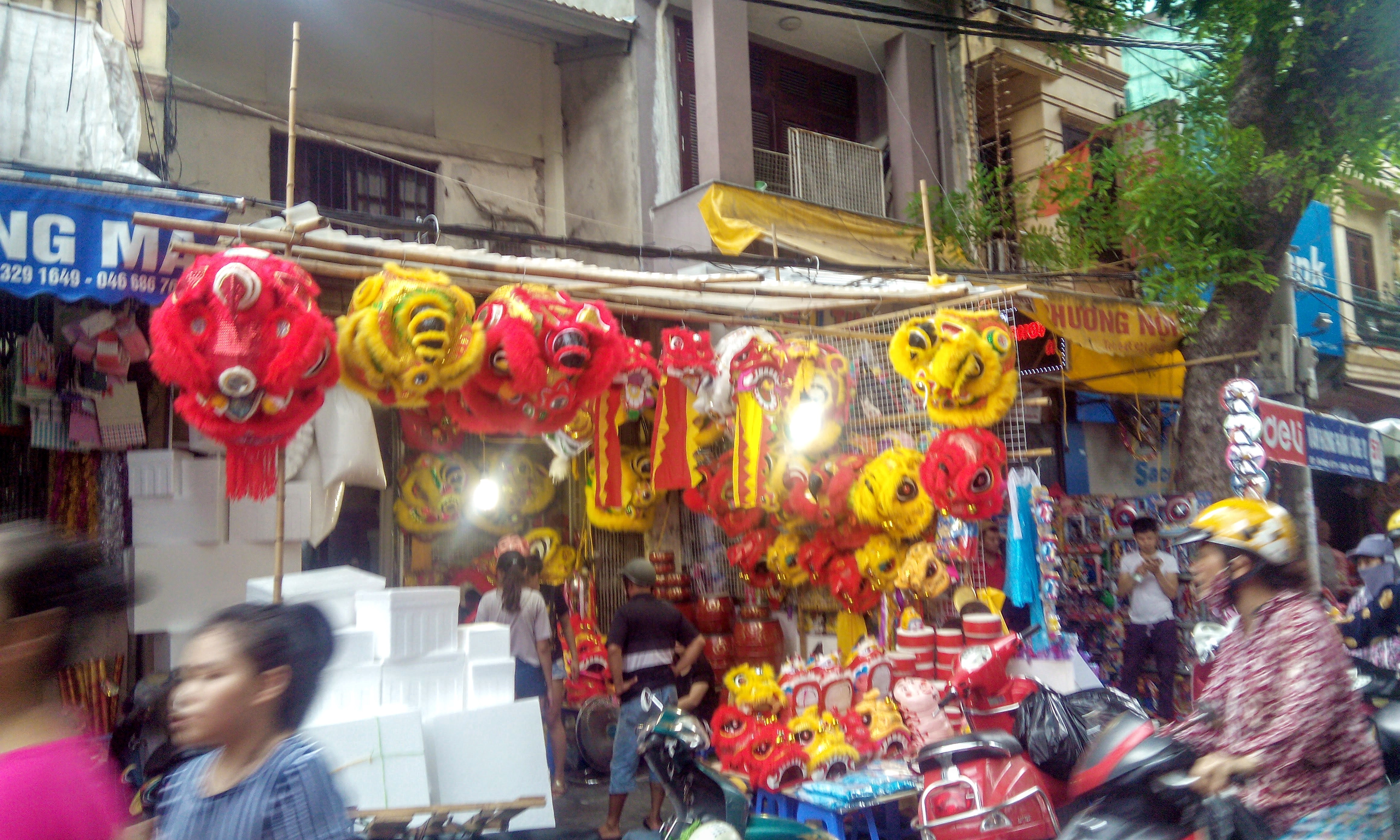






Very interesting post ! I went to ha long bay but didn’t have. A lot of time
LikeLiked by 1 person
Sorry, looks like I’m really slow at responses…Thank you for reading and hope you will have another chance to visit Vietnam again 🙂
LikeLike